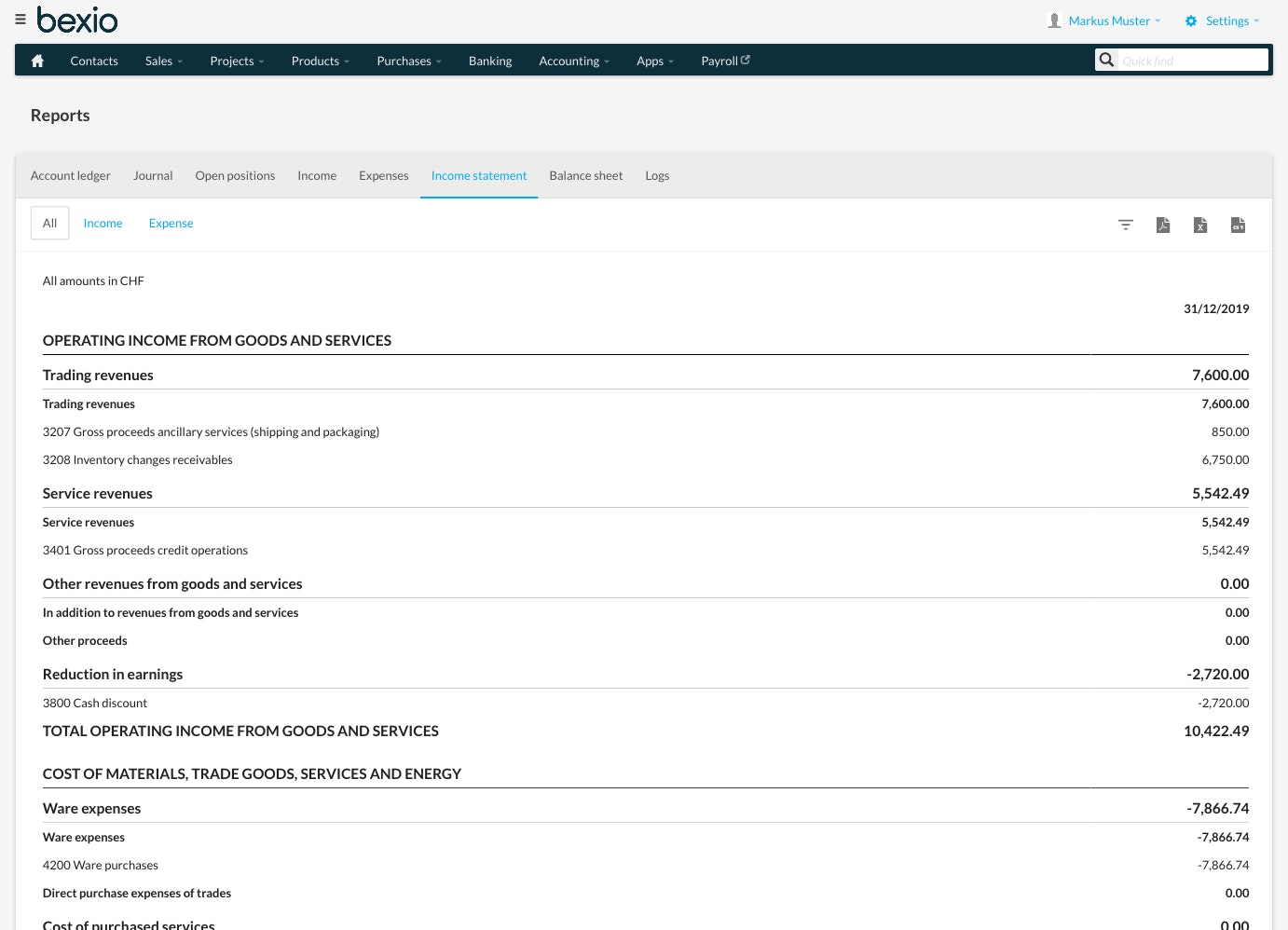EBIT is a business indicator that you need for your accounting. It provides you with information about the operational success of your company. In this article, we will discuss EBIT in detail and show you how you can calculate it for your SME.

What is EBIT?
EBIT is an acronym from English and means "Earnings Before Interest and Taxes" and by definition stands for operating profit before deduction of interest and taxes. EBIT, also known as operating profit, is an accounting indicator that provides information about the success of a company.
How is EBIT calculated?
EBIT is a business indicator that is often referred to synonymously as operating profit. Therefore, only the numbers which can be directly assigned to the operation are used for the calculation. These include, for example, inventory changes, material costs and other operating income. Taxes and interest are not included.
The formula for calculating EBIT is:
EBIT (income from operations) = operating income – operating expenses
For the calculation, you can choose between the total cost method and the cost of sales method. Both methods give you the same result.
Total cost method
| Sales | ||
|---|---|---|
| +/– | Inventory changes for products | |
| + | Capitalised assets | |
| + | Other operating income | |
– | Material costs | |
| – | Staff costs | |
| – | Amortisations | |
| – | Other operating expenses | |
= | EBIT (operating result) |
Cost of sales method
| Sales | ||
|---|---|---|
| – | Costs of production of the services rendered in order to generate sales | |
= | Gross profit from sales | |
– | Distribution costs | |
– | General administrative expenses | |
+ | Other operating income | |
| – | Other operating expenses | |
= | EBIT (operating result) |
What does EBIT tell you?
EBIT is an indicator used to assess the profitability of your company. If a business is profitable, you have used your financial resources successfully and worked efficiently with the money available.
An example of profitability:
For an advertising campaign, CHF 10,000are used. The measure is successful and the planned sales are even exceeded.
If the advertising campaign is unsuccessful and the expected sales are not achieved, this would correspond to an inefficient use of financial resources. This would reduce the company's profitability.
EBIT not only helps to assess profitability. It can also be used for comparison with other companies. It is even possible to make comparisons with international competitors, since interest and taxes are not included in EBIT. On the one hand, taxes and interest rates vary from country to country. For this reason alone, a valid comparison is not possible. On the other hand, interest does not always necessarily belong to the operational activities of a company. Therefore, the pure operational success of a company can be assessed and compared with EBIT.
What is the EBIT margin?
The EBIT margin, like EBIT itself, is an indicator that is often used for the economic assessment of a company. Since the EBIT margin, in contrast to EBIT, is not a monetary value but a percentage value, it is particularly easy to compare one's own company with others and to evaluate operational measures according to their success.
This is how to calculate the EBIT margin using the formula
To calculate the EBIT margin, you need the EBIT and your sales. The margin is given as a percentage. The formula is as follows:
EBIT margin in percent = (EBIT/sales) x 100
The higher the EBIT margin, the better the result the company generated. As with the gross profit margin indicator, this value varies from industry to industry, which should be taken into account when making a comparison.
The EBIT margin not only helps in comparison with national companies, it also shows the profitability of a company, as mentioned above.
How do you interpret the EBIT margin?
Benchmarks have been established which can be used to assess the EBIT margin:
- <15 percent: Companies with a margin above 15 percent are viewed as profitable.
- < 3 percent: The success of a company with a margin below 3 percent is viewed as risky.
EBIT in bexio
If you keep your accounts with software such as bexio, the software will calculate the EBIT for you. All you need to do is read the indicator in the income statement. The income statement shows you whether your company has generated a profit or loss. The EBIT reported there is an indicator for you to be able to assess your company.
FAQ: Frequently asked questions about EBIT
As a meaningful indicator, EBIT is rather difficult to assess for new companies. This is because usually new companies do not yet generate a constant, regular profit. Therefore, the calculation is uncertain and the EBIT should be used with caution as an indicator for the comparison with other companies. However, the EBIT indicator is also gaining more and more attention among newer companies, as it makes clear which measures were successful and which were not.
Both are business indicators that show the profitability of a company. Profitability indicates how successful a company is. In other words, whether it uses the available financial resources efficiently to generate profit. The EBIT indicator is the result before the deduction of interest and taxes, while EBITDA is the result also before the deduction of investment expenses and depreciation.
EBIT is the profit before interest and taxes. This is not to be equated with the net profit, since taxes and interest are still deducted from EBIT. Nevertheless, EBIT is already a good indicator for assessing the profitability of the company and should therefore not be ignored.
EBIT shows operating profit before interest and taxes. Since taxes vary in each country, EBIT is suitable for an international comparison with other companies.
Test out bexio now for 30 days free of charge and with no obligation
Test all the features of bexio, the simple business software for your SME administration.





